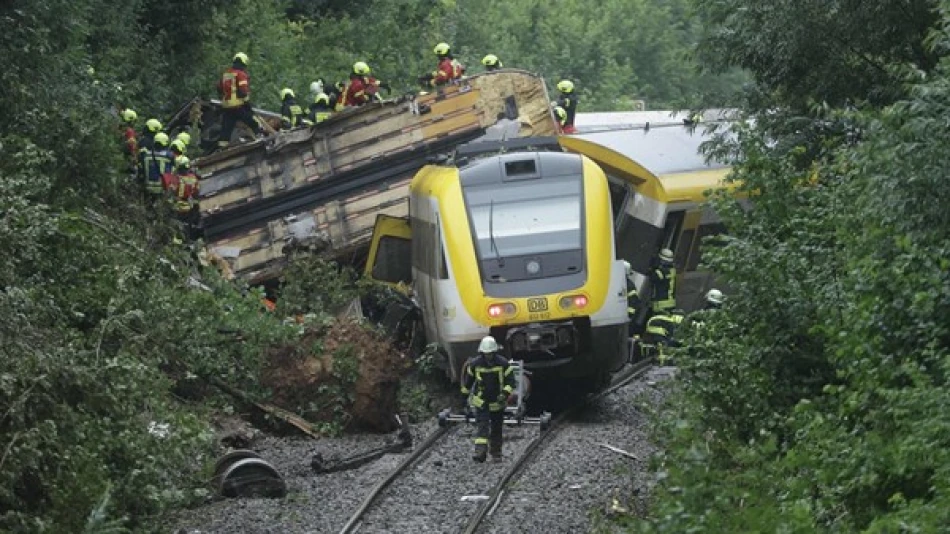
Deadly Train Derailment in Germany Leaves Casualties
Fatal Train Derailment in Germany Highlights Growing Safety Concerns for Regional Rail Networks
A passenger train derailment in southwestern Germany killed four people and injured several others on Sunday, marking another tragic incident that underscores the mounting challenges facing Europe's aging rail infrastructure. The accident occurred in a forested area during what should have been a routine 90-kilometer journey, raising fresh questions about safety protocols on regional routes that carry millions of passengers annually.
The Incident: What Happened
Police confirmed that approximately 100 passengers were aboard the train traveling between Sigmaringen and Ulm when at least two carriages derailed near a small town in the wooded region. A Stuttgart police spokesperson described the scene as serious but noted that the carriages, while overturned and damaged from colliding with each other, remained largely intact—a factor that likely prevented a higher casualty count.
Images released by German news agency showed the derailed cars lying on their sides, testament to the violent nature of the accident despite the relatively controlled final positioning of the wreckage.
Germany's Rail Safety Under Scrutiny
This latest derailment adds to growing concerns about the state of Germany's extensive rail network, which carries over 2 billion passengers annually. While German railways maintain a strong overall safety record compared to road transport, recent years have seen several high-profile incidents that have prompted calls for increased infrastructure investment.
Infrastructure Investment Gap
Germany's rail network, much of it built decades ago, faces a significant modernization challenge. The country has committed billions of euros to rail upgrades, but critics argue the pace of improvement lags behind the network's deteriorating condition. Regional routes like the Sigmaringen-Ulm line often receive less attention than high-speed corridors, despite carrying substantial passenger loads.
Broader European Context
Germany's rail safety challenges mirror those across Europe, where aging infrastructure meets increasing passenger demand. France has invested heavily in its TGV network while struggling with regional connections, and the UK continues to grapple with modernization costs following decades of underinvestment.
However, European rail systems still maintain significantly better safety records than their counterparts in many other regions. The European Railway Agency reports that rail travel remains statistically much safer than road transport, with fatal accidents rare relative to passenger volumes.
Economic and Policy Implications
Sunday's accident will likely intensify political pressure on German authorities to accelerate infrastructure spending. The incident comes as the European Union pushes member states to shift more transport toward railways as part of climate goals, creating tension between expansion ambitions and safety imperatives.
For Germany's Deutsche Bahn, already facing criticism over delays and service quality, this derailment represents another reputational challenge. The state-owned operator has struggled to balance commercial pressures with infrastructure maintenance needs, a common dilemma for European rail operators.
Investment vs. Immediate Safety
The key question facing policymakers is whether to prioritize immediate safety improvements on existing routes or continue focusing resources on new high-speed connections. Sunday's accident suggests regional routes deserve more attention, even if they lack the political appeal of flagship projects.
As investigation into the cause continues, this tragedy serves as a stark reminder that Europe's transition to sustainable transport depends not just on building new rail capacity, but ensuring existing networks can safely handle their crucial role in the continent's mobility future.
 Layla Al Mansoori
Layla Al Mansoori







